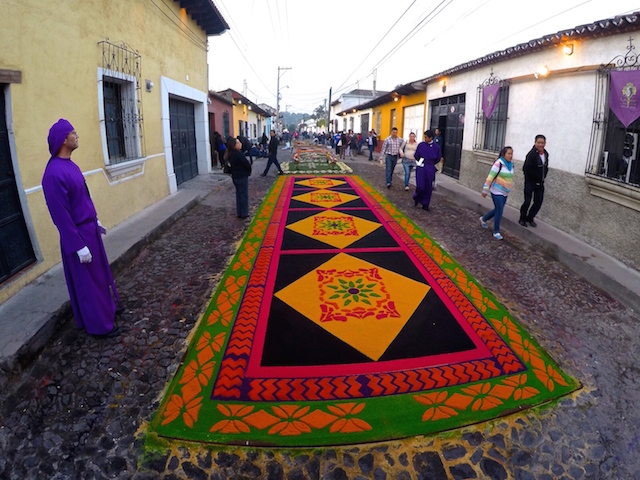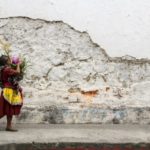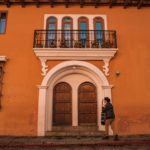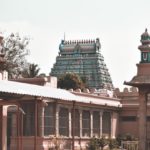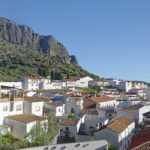Holy Week in Antigua
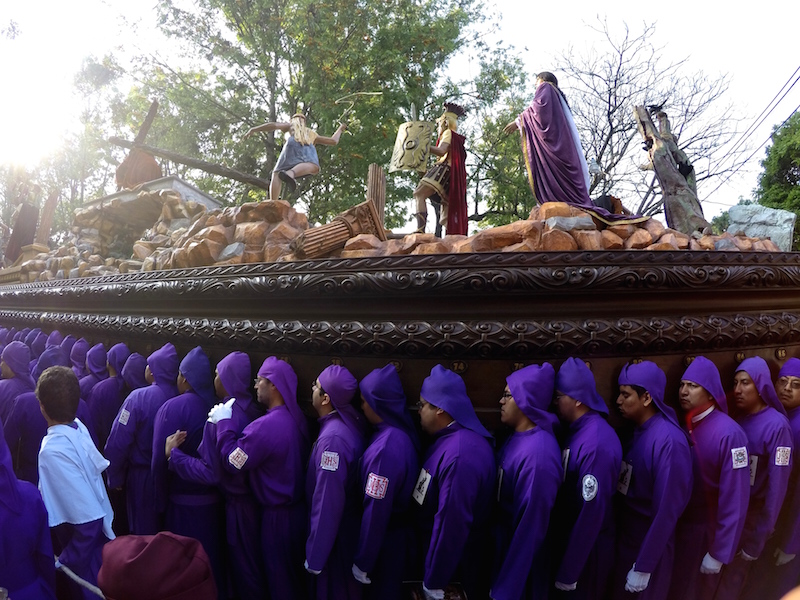
To reminisce is to recall the past and recreate a memorable experience countless times. This is exactly what happened to me when I was going through my old pictures of Antigua trying to determine what makes the city such a popular destination in Guatemala. Perhaps it is the colorful scenery and its colonial architecture that makes it unique. Walking through the cobblestone streets of this city, tourists can be transported back in time and relive Guatemala’s colonial period.
Antigua gets a lot of attention during Holy Week when thousands of tourists visit to experience the exquisite traditions it has to offer. The week is marked by specific local events that commemorate the town’s Catholic history. This is part of the religious fervor that came from Spain 500 years ago. Guatemala is a conservative society, which values rites and traditions, repeated year after year. Below are a few of my favorite photographs and I’ll explain their relevance in Antigua during the Season of Lent.
Antigua Holy Week: What You’ll Want to Know
Processions
This photo captures the moment a procession is carried out by individuals (colloquially referred to as “cucuruchos”) dressed in the same colored uniform. Processions are carried out in many religions, but for the Catholic religion, they represent a great tribute to Jesus and his suffering, which is relived during Holy Week. The procession is made up of religious images that reflect distinct significant historical moments.
The andas or floats are the heavy main structures in the procession made from wood with decorative carvings on the sides. The images carried by the floats are made by local artisans and take a long time to finish. Andas designs are each unique and vary every year.
Each procession is a solemn parade where we find an instrumental band, children walking with incense, a Virgin Mary and Jesus Christ float, and men dressed as penitents. All of these elements make up a picturesque scene that attracts many visitors.
Cucuruchos
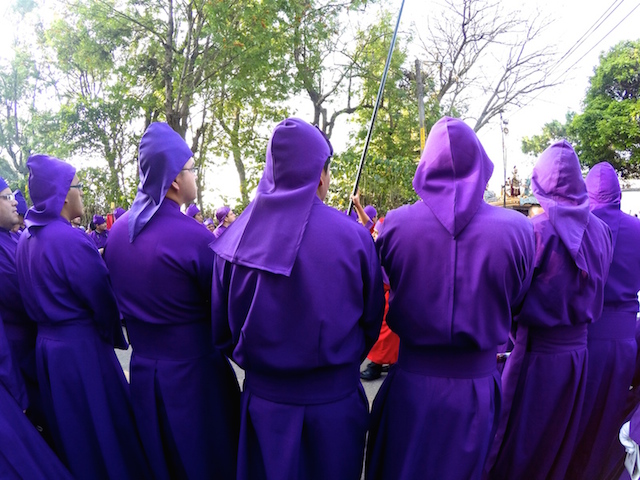
The army of men all dressed in the same purple robe in this picture participate in the procession along the cobblestone streets. Cucuruchos are men dressed as penitents from the colonial era. The word has evolved from meaning “a tunic” to become the actual name for participants. Purple is the typical color of the tunic used in all of processions, except on Good Friday where they change from purple to black.
The Cucuruchos carry the heavy float across Antigua, which is considered a privilege because this is an act of penance to repent for your sins. Every cucurucho has his own turno or shift to carry the float. The shifts are about one block long; however, due to the weight of the float, around 140 cucuruchos are necessary for every shift.
Antigua Holy Week: What You’ll Want to Know
Carpets
The aserrín carpets, or sawdust decorated by flowers and fruit, are one of the most important features of the Holy Week celebrations. The long and extravagant carpets are characteristic of Guatemalan art. These colored sawdust rugs are a perfect example of religious syncretism because they combine elements from both the Spaniards and the indigenous people. The meaning of the carpets is to offer thanks, a favor, or a miracle.
People work hours on these carpets. As processions pass on the rugs, they get destroyed. In this photograph, it is clear that every carpet has a different design made by distinct patterns of aserrín put together to create beautiful images.
Food
Guatemalan food is unique, and the taste of the great variety of typical dishes is fascinating. It is not very spicy, and it mostly uses corn as a base due to its abundance in this region. Every visitor should try the “Atol de Elote”, “Tamal”, “Chuchitos” and “Tostadas.” They are sold in every restaurant in Antigua, as well as in the Central Park. If you have a sweet tooth, Antigua offers a variety of candied fruit and milk-based candies.
Antigua is always a city to visit for its scenery and unique architecture. But, during Holy Week it offers much more.
Have you traveled to Antigua, Guatemala? What were your impressions? Email us at editor@pinkpangea.com for information about sharing your experience and advice with the Pink Pangea community. We can’t wait to hear from you.
Antigua Holy Week: What You’ll Want to Know photo credits: Isabella Rolz

